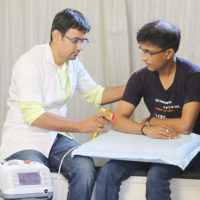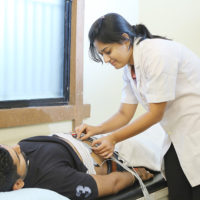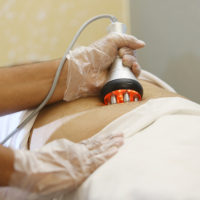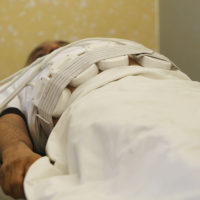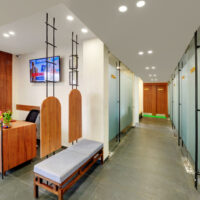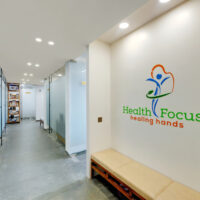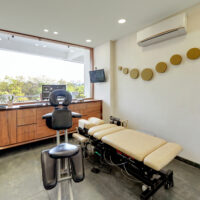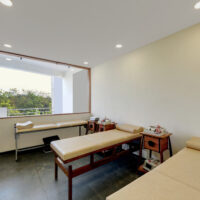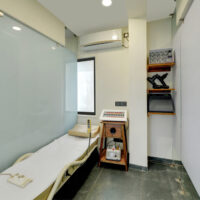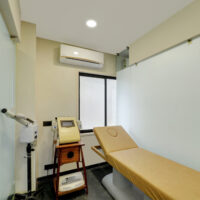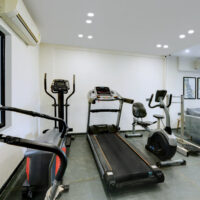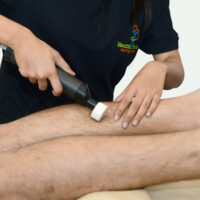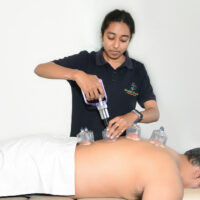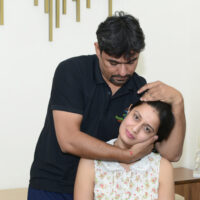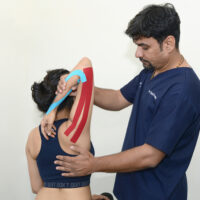Back pain can have causes that aren’t due to underlying disease. Examples include overuse such as working out or lifting too much, prolonged sitting and lying down, sleeping in an uncomfortable position or wearing a poorly fitting backpack.
Back Pain
Strain or Sprain is most common causes of back pain and are often the result of lifting something heavy, sudden movements or twisting in an awkward manner. Sprain in the back occurs when you overstretch the ligament of spine and Strain occurs due to overstretch of the muscle of the spine.
- Strains often cause localized pain in the affected area, which can vary from mild to severe. The pain may worsen with movement or activity.
- You may experience muscle stiffness or tightness in the back.
- In some cases, back strain can lead to muscle spasms, which are involuntary contractions of the muscles.
- You may find it difficult to move your back fully or perform certain movements without pain.
- The affected area may be tender to touch.
- Sprains can lead to localized swelling around the injured area.
- Some individuals may develop bruising or discoloration of the skin over the sprained area.
- If a sprain is severe, you may experience a feeling of instability or weakness in the back.
- Maintain proper posture while sitting, standing, and walking. Use ergonomic furniture and make sure your work area is set up correctly to support your back.
- When lifting heavy objects, bend your knees and use your leg muscles to lift, rather than straining your back. Keep the object close to your body and avoid twisting while lifting.
- Engage in regular exercise to strengthen the muscles that support your back. Focus on exercises that target your core muscles, such as abdominal and back exercises, as they provide stability to your spine.
- Excess weight can strain your back and increase the risk of injury. Maintain a healthy weight through a balanced diet and regular exercise.
- Warm up before physical activity.
- Use proper techniques during physical activities, whether you’re participating in sports, gardening, or any other physical activity, use proper techniques and body mechanics to minimize the strain on your back. Avoid overexertion and take breaks when needed.
- Wear supportive footwear.
- Use proper ergonomics.

Poor Posture
When you maintain an improper posture for extended periods, it puts a strain on the muscles and ligaments in your back, which can lead to pain, stiffness, and discomfort.
Sitting or standing in a slouched or hunched position for prolonged periods it can cause your spine to curve unnaturally, which places additional pressure on your back muscles, joints, and discs. Over time, this can lead to chronic pain and can even cause structural changes in your spine.
- One of the most noticeable effects of poor posture is back and neck pain. Slouching or hunching over can strain the muscles and ligaments in the back and neck, leading to discomfort and chronic pain.
- Maintaining a slouched or slumped posture for extended periods can cause muscle imbalances. Certain muscles become overactive and tight, while others become weak and lengthened.
- Poor posture can contribute to decreased flexibility and restricted range of motion in the joints.
- Poor posture, particularly forward head posture or slumping shoulders, can strain the muscles and nerves in the neck and upper back, leading to tension headaches or migraines.
- Prolonged poor posture can lead to spinal misalignment or suboptimal spinal positioning. This can affect the alignment of vertebrae and potentially lead to conditions such as scoliosis or increased risk of disc problems.
- Pay attention to your posture throughout the day, whether you’re sitting, standing, or walking
- When standing, keep your shoulders back and relaxed. Align your ears, shoulders, hips, and ankles in a straight line
- When sitting, choose a chair that provides good back support. Sit with your back against the chair, keeping your shoulders relaxed and your feet flat on the floor.
- If you have a desk job or spend a lot of time at a computer, invest in ergonomic equipment such as an adjustable chair, keyboard, and monitor. These can help support good posture and reduce strain on your body.
- If you have a sedentary job, make a habit of taking short breaks every 30 minutes to stand up, stretch, and walk around
- Strengthen your core muscles
- Stretching can help improve flexibility and relieve muscle tension. Focus on stretching your chest, shoulders, neck, and hip flexors to counteract the effects of slouching and sitting for long periods.
- Excess weight can strain your muscles and joints, affecting your posture. Maintain a healthy weight through a balanced diet and regular exercise to reduce the load on your body.
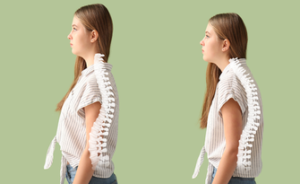
Herniated or Bulging Discs
Herniated disc is a common cause of back pain. The spinal discs are small, gel-like cushions located between each vertebra in your spine, and they help to absorb shock and provide flexibility to your spine. When a disc becomes herniated, it means that the outer layer of the disc has torn, allowing the inner gel-like material to leak out.
The leaking disc material can then press on nearby nerves in your spine, causing pain, numbness, or tingling sensations. Herniated discs can occur in any part of the spine, but they are most common in the lower back (lumbar spine) and the neck (cervical spine).
Symptoms of a herniated disc can vary, but they often include back pain, leg pain, weakness, and numbness. The pain may worsen when sitting, standing, or bending over, and it may improve when lying down or changing positions.
- Maintain proper posture when sitting, standing, and lifting. Use ergonomic chairs and maintain the natural curve of your spine to minimize strain on the discs.
- Excess weight puts additional strain on the spine and increases the risk of disc herniation. Maintain a healthy weight through a balanced diet and regular exercise.
- Excess weight puts additional strain on the spine and increases the risk of disc herniation. Maintain a healthy weight through a balanced diet and regular exercise.
- Pay attention to your body mechanics during activities. Use proper techniques and body alignment while performing tasks like bending, lifting, and carrying to reduce strain on your spine.
- Repeatedly performing activities that involve bending, lifting, or twisting motions can increase the risk of disc herniation. If possible, modify your activities or take frequent breaks to avoid prolonged stress on your spine.
- Ensure that your workspace, including your desk, chair, and computer setup, is ergonomically designed. Adjust the height and position of your chair, desk, and computer screen to promote good posture and reduce strain on your spine.
- Regular physical activity helps keep your spine strong and flexible. Incorporate activities like walking, swimming, or cycling into your routine to promote spinal health.
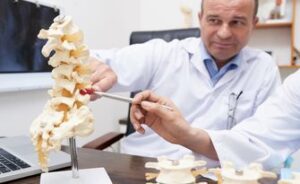
Lumbar Spondylosis
Lumbar spondylosis, also known as spinal osteoarthritis, is a condition that affects the lower part of the spine (lumbar spine). It is a degenerative condition that results in the wear and tear of the spinal discs, joints, and bones in the lumbar spine.
As the discs and joints in the lumbar spine degenerate, they may become less effective at cushioning and stabilizing the spine. This can lead to the development of bone spurs, which are bony growths that can put pressure on nearby nerves, causing pain and other symptoms.
Symptoms of lumbar spondylosis can vary but may include lower back pain, stiffness, numbness, tingling, and weakness in the legs. The pain may be worse when standing or walking and may improve when sitting or lying down.
- Excess weight puts additional stress on the spine, contributing to the degeneration of the lumbar discs. Maintain a healthy weight through a balanced diet and regular exercise to reduce the load on your spine.
- Engage in regular exercise that focuses on strengthening the muscles that support the spine, particularly the core muscles. Strengthening the muscles can help provide better support to the lumbar spine and reduce the risk of spondylosis.
- Maintain proper posture when sitting, standing, and walking. Use ergonomic chairs and ensure that your workstation is set up correctly to promote good posture and reduce strain on the spine
- Use proper lifting techniques when picking up heavy objects. Bend your knees, keep your back straight, and lift with your legs instead of your back. Avoid twisting or jerking motions while lifting.
- Prolonged or repetitive activities that involve bending, lifting, or twisting motions can contribute to the development or progression of lumbar spondylosis
- Ensure that your workspace, including your desk, chair, and computer setup, is ergonomically designed. Adjust the height and position of your chair, desk, and computer screen to promote good posture and reduce strain on your spine.
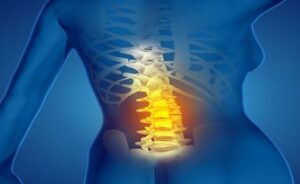
Spinal Canal Stenosis
Spinal stenosis refers to the narrowing of the canals that are formed by the vertebrae. This narrowing can impinge on the nerve coming out from your spine or the spinal cord itself.
spinal canal stenosis cause radiating pain and numbness to the buttock, thigh, or leg particularly during walking or standing for a long time. The pain reduces usually when a patient is in resting, sits down, or bends forward.
- Excess weight puts additional stress on the spine, contributing to the degeneration of the lumbar discs. Maintain a healthy weight through a balanced diet and regular exercise to reduce the load on your spine.
- Engage in regular exercise that focuses on strengthening the muscles that support the spine, particularly the core muscles. Strengthening the muscles can help provide better support to the lumbar spine and reduce the risk of spondylosis.
- Maintain proper posture when sitting, standing, and walking. Use ergonomic chairs and ensure that your workstation is set up correctly to promote good posture and reduce strain on the spine
- Use proper lifting techniques when picking up heavy objects. Bend your knees, keep your back straight, and lift with your legs instead of your back. Avoid twisting or jerking motions while lifting.
- Prolonged or repetitive activities that involve bending, lifting, or twisting motions can contribute to the development or progression of lumbar spondylosis
- Ensure that your workspace, including your desk, chair, and computer setup, is ergonomically designed. Adjust the height and position of your chair, desk, and computer screen to promote good posture and reduce strain on your spine.
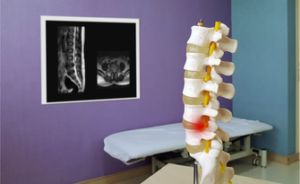
Scoliosis
Scoliosis is a condition in which the spine curves sideways, resulting in an S- or C-shaped curve. The curvature can range from mild to severe and may affect any part of the spine, although it is most commonly seen in the thoracic (upper back) or lumbar (lower back) regions.
Symptoms of scoliosis may include uneven shoulders or hips, a visible curve in the spine, back pain, and difficulty breathing. In some cases, scoliosis may not cause any symptoms at all.
Physical therapy and exercises can also help improve posture and strengthen the muscles supporting the spine. In some cases, chiropractic care FDM may also be helpful.
• Engage in regular physical activity to promote overall spinal health and strengthen the muscles that support the spine. Exercises that focus on core strength, flexibility and posture can be beneficial.
• Practice good posture while sitting, standing, and walking. Avoid slouching or hunching forward, and consciously make an effort to align your head, shoulders, and hips.
• Ensure that your workspace is ergonomically designed to support proper posture and spinal alignment. Use a chair with good lumbar support, position your computer monitor at eye level, and use a keyboard and mouse that are comfortable for your hands and wrists.
• Avoid heavy backpacks, When carrying backpacks or bags, avoid overloading them with excessive weight.
• Take breaks during sedentary activities

YOUR NEXT STEPS!
-
Request An Appointment
-
Find the Root Cause and Receive A Custom Treatment Plan
-
Monitor Progress
-
Recover & Get Back to Life!
